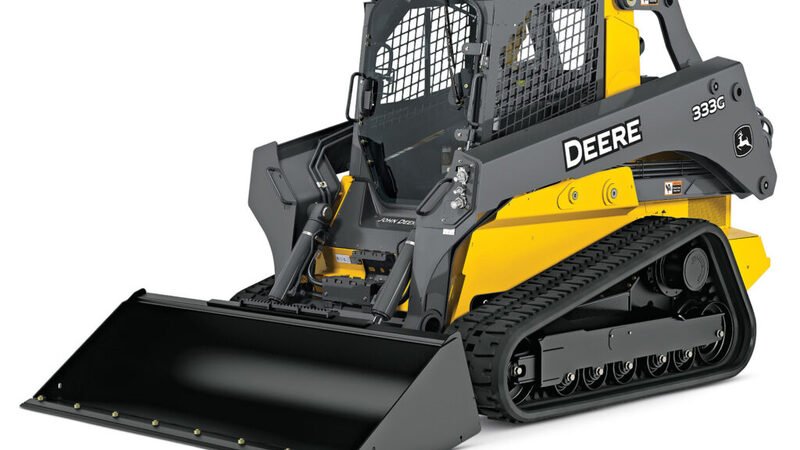John Deere Skid Steer are a vital part of many industries, including construction, agriculture, and landscaping. When investing in a skid steer, whether new or used, one of the most important considerations is its lifespan. John Deere dealer models are known for their durability and reliability, but like all heavy equipment, their longevity depends on various factors such as maintenance, operating conditions, and workload.
Understanding how long a John Deere dealer skid steer can last and how to extend its lifespan can help owners and operators make informed decisions about purchasing, maintaining, and eventually replacing their equipment.
Average Lifespan of a John Deere Skid Steer
The lifespan of a John Deere skid steer is typically measured in operating hours rather than years. On average, a well-maintained skid steer can last 5,000 to 7,000 operating hours before requiring significant repairs or rebuilds. However, with proper maintenance and responsible operation, some skid steers can exceed 10,000 hours of service.
| Usage Type | Expected Lifespan |
| Light Use (Farms, Landscaping) | 8,000 – 10,000+ hours |
| Moderate Use (General Contracting) | 6,000 – 8,000 hours |
| Heavy Use (Construction, Demolition) | 5,000 – 7,000 hours |
While these numbers provide a general estimate, several factors influence how long a skid steer remains in optimal working condition.
Factors That Affect the Lifespan of a John Deere Skid Steer
1. Maintenance and Servicing
Regular maintenance is the most important factor in determining how long a skid steer will last. Skipping routine maintenance or delaying repairs can significantly reduce its lifespan.
- Oil and filter changes should be done every 250 hours.
- Hydraulic fluid and filter changes are recommended every 500 hours.
- Checking and replacing worn-out tracks, tires, and attachments helps maintain efficiency.
2. John Deere Skid Steer Operating Conditions
The environment in which a skid steer is used plays a crucial role in its longevity. Machines that frequently operate in harsh conditions, such as muddy, dusty, or rocky terrain, tend to experience more wear and tear.
3. Workload and Frequency of Use
Skid steers used daily in construction and demolition projects wear out faster than those used occasionally for landscaping or agricultural tasks. Heavy lifting, continuous digging, and high-impact tasks put more strain on the hydraulic system and engine.
4. Operator Handling
Proper operation techniques can significantly extend a skid steer’s lifespan. Skilled operators who follow best practices, such as avoiding excessive strain on hydraulic components and preventing unnecessary idling, help reduce wear and tear.
5.Quality of Parts and Repairs
Using high-quality replacement parts and performing timely repairs ensures that the skid steer continues to function optimally. John Deere dealer replacement parts are specifically designed for their machines, making them the best choice for repairs and maintenance.
Signs That a John Deere Skid Steer Needs Major Repairs
Over time, all skid steers show signs of aging and wear. While regular maintenance can keep them running smoothly, there are certain indicators that suggest a skid steer may need significant repairs or even replacement.
- Loss of Power – If the machine struggles to operate as efficiently as before, it could indicate engine or hydraulic issues.
- Excessive Fluid Leaks – Frequent leaks from the hydraulic system, engine, or transmission are a sign of worn seals or components.
- Strange Noises – Grinding, knocking, or excessive vibration could indicate internal wear.
- High Repair Costs – When repair costs exceed the machine’s value, it may be time to consider a replacement.
- Frequent Downtime – If the skid steer requires constant repairs, it can impact productivity and become too costly to maintain.
How to Extend the Life of a John Deere Skid Steer
To maximize the lifespan of a John Deere skid steer, follow these best practices:
1. Follow a Maintenance Schedule
Sticking to the manufacturer’s recommended service intervals helps prevent major breakdowns.
2. Use the Right Attachments
Ensure that attachments are compatible with the skid steer’s weight and hydraulic capacity. Overloading can cause premature wear on hydraulic systems.
3. Store the Skid Steer Properly
Keeping the machine in a covered, dry area protects it from harsh weather conditions and prevents rusting.
4. Train Operators on Proper Use
Ensuring that operators are trained in best practices reduces unnecessary strain on the machine.
5. Invest in Quality Replacement Parts
Using genuine parts from a John Deere dealer helps maintain performance and longevity.
Final Thoughts
A well-maintained John Deere skid steer can last anywhere from 5,000 to 10,000 hours, depending on usage and care. Regular maintenance, proper operation, and timely repairs are key to extending its lifespan. Whether buying new or used, working with a trusted John Deere dealer ensures access to high-quality equipment and replacement parts, helping operators get the most out of their investment. Visit WORLD STYLE MMAGAZINE For More Information.

